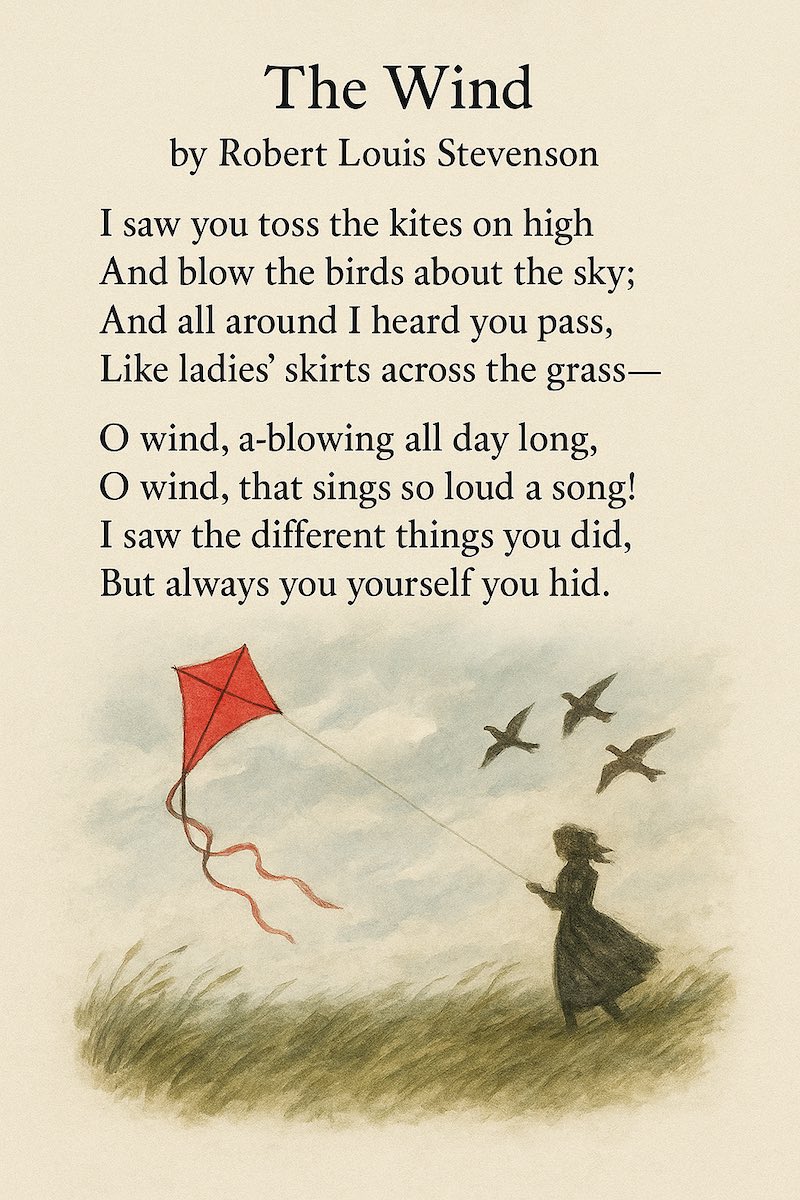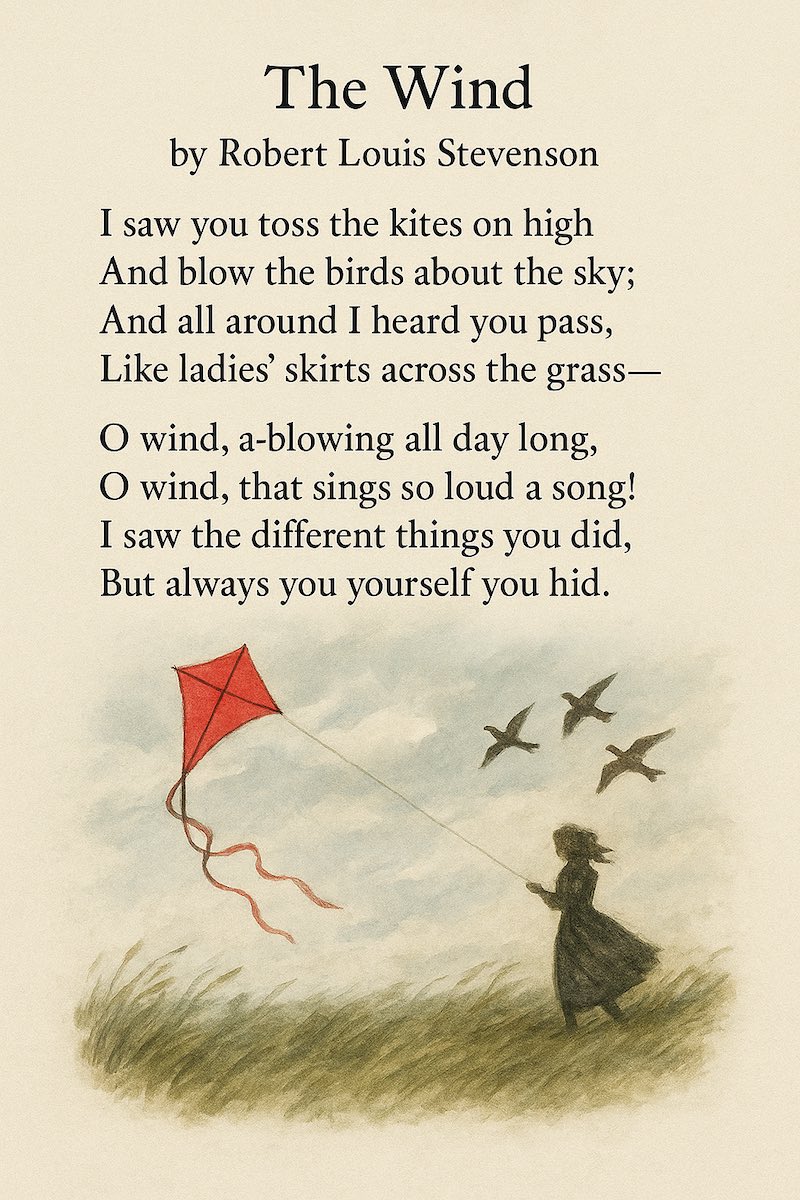The Invisible Force: Robert Louis Stevenson’s Playful “The Wind”
Robert Louis Stevenson's "The Wind," first published in his 1885 collection A Child's Garden of Verses, is a poem that captures the wonder of a natural force we can feel but can never see. In simple, musical language, Stevenson gives a voice and a personality to the invisible air, making it immediately relatable and memorable.
The Poem
I saw you toss the kites on high
And blow the birds about the sky;
And all around I heard you pass,
Like ladies’ skirts across the grass—
O wind, a-blowing all day long,
O wind, that sings so loud a song!
I saw the different things you did,
But always you yourself you hid
The Insight: Personification for the Concise Verse
Stevenson was a master of concise storytelling, and here he uses personification—giving human traits to the wind—to explain a complex natural phenomenon to a young audience.
-
A Hidden Being: The poem emphasizes the wind's actions ("toss the kites," "blow the birds") while highlighting its mystery: "But always you yourself you hid." This contrast between the wind's observable effect and its invisible self is the core of the poem's charm.
-
Musicality: The poem's simple AABB rhyme scheme and the repetitive rhythm of the lines make it feel like a song, perfectly mimicking the continuous sound and motion of the wind itself. This strong use of sound makes it an excellent piece for an audio medium like a podcast.
-
Sensory Detail: Instead of just telling us the wind is strong, Stevenson uses sensory details—the sight of kites going high and the sound of the wind passing "Like ladies' skirts across the grass"—to quickly and concisely paint the full picture.

